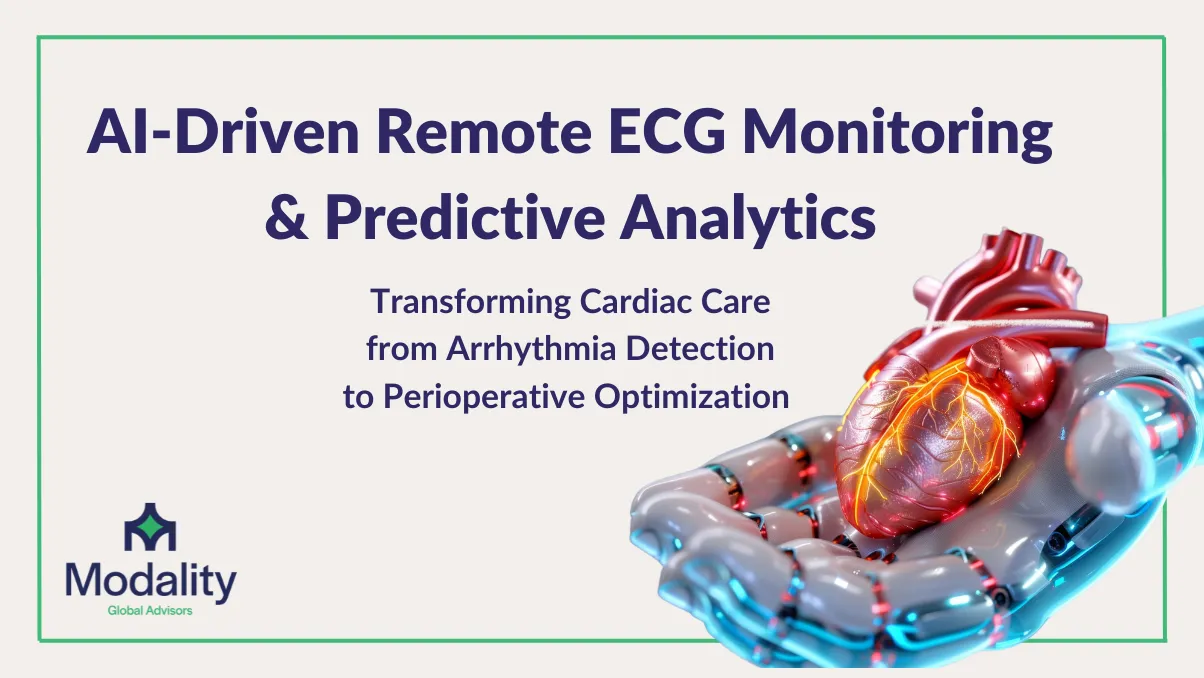Cardiac care is undergoing a significant transformation, fueled by the rapid adoption of artificial intelligence (AI), advanced analytics, and connected medical devices. This evolution is especially apparent in two critical areas of cardiovascular medicine: arrhythmia detection through remote electrocardiogram (ECG) monitoring and predictive analytics to optimize perioperative outcomes. From early diagnosis of atrial fibrillation (AFib) in outpatient settings to reducing postoperative complications in the surgical suite, these technologies are reshaping the standard of care. This article explores how AI ECG interpretation and data analytics are converging to improve clinical decision-making, patient outcomes, and healthcare operations.
I. Rising Burden of Cardiac Arrhythmias and the Need for Innovation
Atrial fibrillation (AFib)—the most common sustained arrhythmia—affects over 33 million people globally, with about 5.2 million cases in the United States alone as of 2023. Projections suggest that U.S. prevalence could exceed 12 million by 2030. AFib accounts for 15–20% of ischemic strokes, rising to 30% in cryptogenic cases. Timely diagnosis and effective management are essential to reducing complications such as stroke and heart failure.
II. Extending Arrhythmia Detection Beyond Hospital Boundaries
A. Remote ECG Monitoring and AI Integration
Remote ECG monitoring devices, such as AliveCor's KardiaMobile® 6L, are revolutionizing arrhythmia diagnosis. Integration with AI and platforms like GE HealthCare's MUSE™ allows real-time sharing of ECG data directly into patients' electronic medical records (EMR), enabling continuous care.
Clinical and Operational Benefits:
- Extended Monitoring Timeframe: Remote ECG captures infrequent arrhythmias missed by traditional Holter monitors.
- Enhanced Diagnostic Accuracy and Early Intervention: AI ECG interpretation can achieve 95–99% sensitivity, enabling early stroke prevention therapies.
- Reduced Healthcare Utilization: Remote monitoring reduces urgent visits and readmissions, saving $8,000–$12,000 per patient per year.
- Better Patient Experience: Patients monitor their heart at home, improving satisfaction and outcomes.
B. Impact on High-Risk Populations
Postoperative arrhythmias affect 30–50% of cardiac surgery patients. Remote monitoring extends care post-discharge, reducing complications by 25–40% and integrating data directly into EHRs for seamless care coordination.
III. Predictive Analytics: Transforming Perioperative Cardiac Care
A. Preoperative Risk Stratification
AI algorithms analyze patient data to predict surgical risk with 85–95% accuracy, helping clinicians tailor interventions and reduce complications.
B. Intraoperative Monitoring and Real-Time Analytics
Real-time AI tools track vital signs and conditions during surgery, reducing adverse events by 30–50% and improving patient outcomes.
C. Postoperative Monitoring and Complication Prevention
Predictive analytics flag high-risk patients, enabling targeted interventions and reducing complications and readmissions by up to 40%.
IV. Financial and Operational Implications
- Cost Savings
- Operating Room (OR) Efficiency
- ICU and Staffing Optimization
- Improved Length of Stay and Readmission Rates
V. Technology Adoption Trends and Future Directions
A. Widespread Implementation
60–80% of U.S. health systems use AI ECG analysis. 70% use predictive analytics; 55% employ it for personalized treatments.
Clinical Outcomes and Success Stories:
- Mayo Clinic: 90% AFib detection accuracy with AI ECG tools.
- Cleveland Clinic: 25% reduction in readmissions using remote monitoring and analytics.
B. Personalized Treatment and Continuous Monitoring
Continuous monitoring and AI analytics provide tailored interventions, especially for complex patients with multiple conditions.
C. Future Challenges and Considerations
- Data Privacy and Security: IoMT expansion raises security and compliance concerns.
- Integration and Interoperability: Ensuring seamless data integration across systems remains challenging.
- Reimbursement and Policy: Insurance models must evolve to support AI-based technologies.
- Training and Clinical Workflow: Ongoing training is required to fully leverage AI systems.
VI. Impact on Clinical Outcomes and Patient Care
A. Improving Stroke Prevention and Mortality
Early AFib detection and predictive analytics reduce stroke risk by 45% and mortality by about 30%.
B. Reducing Postoperative Arrhythmias
Real-time alerts enable proactive treatment, reducing complications by 25–40% and improving patient health.
C. Enhancing Patient Satisfaction and Engagement
Wearable ECG devices empower patients to track their health, boosting adherence and satisfaction through collaborative care.
VII. Conclusion
AI-driven remote ECG monitoring and predictive analytics are revolutionizing cardiac care—improving outcomes, reducing costs, and enhancing patient engagement. As wearable tech, AI analytics, and personalized medicine continue to evolve, the future of cardiology is becoming more precise, proactive, and patient-centered. By adopting these innovations, healthcare can reduce the global burden of cardiovascular disease and deliver better outcomes for millions.

